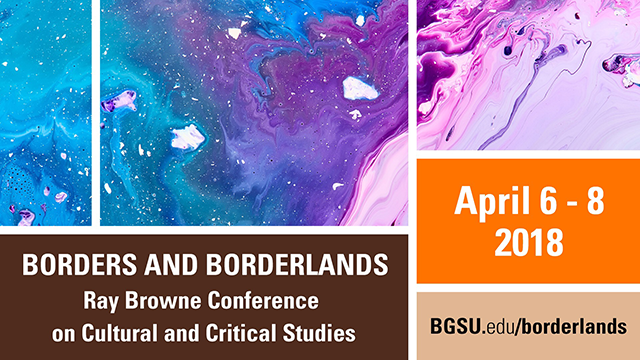
Concurrent Panel Session Five
Mapping the Borders of Nonviolent Revolutionary Protest
Start Date
7-4-2018 2:00 PM
End Date
7-4-2018 2:50 PM
Abstract
The phenomenon of nonviolent revolutionary protest (NVRP) provides numerous opportunities for identifying and interrogating artificially-imposed borders. Exploring these cross-disciplinary borders explicitly and systematically allows for a better understanding of both the increasing prevalence of nonviolence in the fight against domination and the potential implications inherent in such a context. The borders associated with NVRP are conceptual, communicative, relational, and ideological. NVRP frustrates the conceptual borders imposed by formal modelers while studying the dynamics of protest and repression. The ‘unidimensional behavior spaces’ typical of such models cannot accommodate NVRP, the ambiguity of which results from the communicative borderlands inhabited by those engaging in it. As a speech act, NVRP is indirect and neither fully declarative nor fully assertive. The major function of indirect speech, however, concerns relational borders; it simultaneously negotiates relationships while maintaining the safety of the status quo. Adapting Fiske’s four types of sociality, NVRP aims to convert an ‘authoritarian’ system into a more ‘equal’ system (at least when the explicit goal of NVRP aligns with liberal democratic goals, which it often does). NVRP’s aims are enacted through the ‘collective’ performance of self-sacrifice. A ‘market’ mechanism potentially facilitating the adoption of NVRP is highlighted through a return to the methodological individualism of formal models and game theory. Examining the empirical mechanisms, particularly instances of third-parties reducing the costs of collective action, undermines the ideological abstractions of state-based independence, freedom, and self-determination while emphasizing instead the reality of situatedness and interconnectedness at all relational levels.
Keywords
nonviolence, revolution, protest, speech, formal methodology, relationality, empirical, ideology
Mapping the Borders of Nonviolent Revolutionary Protest
The phenomenon of nonviolent revolutionary protest (NVRP) provides numerous opportunities for identifying and interrogating artificially-imposed borders. Exploring these cross-disciplinary borders explicitly and systematically allows for a better understanding of both the increasing prevalence of nonviolence in the fight against domination and the potential implications inherent in such a context. The borders associated with NVRP are conceptual, communicative, relational, and ideological. NVRP frustrates the conceptual borders imposed by formal modelers while studying the dynamics of protest and repression. The ‘unidimensional behavior spaces’ typical of such models cannot accommodate NVRP, the ambiguity of which results from the communicative borderlands inhabited by those engaging in it. As a speech act, NVRP is indirect and neither fully declarative nor fully assertive. The major function of indirect speech, however, concerns relational borders; it simultaneously negotiates relationships while maintaining the safety of the status quo. Adapting Fiske’s four types of sociality, NVRP aims to convert an ‘authoritarian’ system into a more ‘equal’ system (at least when the explicit goal of NVRP aligns with liberal democratic goals, which it often does). NVRP’s aims are enacted through the ‘collective’ performance of self-sacrifice. A ‘market’ mechanism potentially facilitating the adoption of NVRP is highlighted through a return to the methodological individualism of formal models and game theory. Examining the empirical mechanisms, particularly instances of third-parties reducing the costs of collective action, undermines the ideological abstractions of state-based independence, freedom, and self-determination while emphasizing instead the reality of situatedness and interconnectedness at all relational levels.

